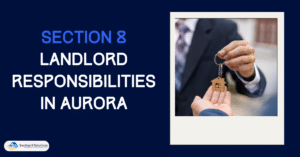Navigating the Section 8 waitlist in Tulsa can be a daunting task due to high demand and limited availability. Applicants are encouraged to regularly update their information, and seek guidance from local housing agencies for the best chances of securing assistance. Staying informed and proactive is key to successfully moving through the waitlist and securing affordable housing.
In this blog, we’ll explore the unique intricacies of this system specific to Tulsa and emphasize the importance of understanding each step of the process to navigate it successfully.

Understanding the Section 8 Program
The Section 8 Housing Choice Voucher program serves as a cornerstone for many in pursuit of affordable housing solutions in the U.S. Established with the primary aim of assisting low-income families, the elderly, and the disabled to afford decent, safe, and sanitary housing in the private market, the program works by subsidizing a portion of the tenant’s rent, bridging the gap between what they can afford and the market rate.
At the helm of this initiative are the Public Housing Agencies (PHAs). Tasked with administering the vouchers, PHAs operate at the local level, tailoring their efforts to the specific needs and challenges of their regions. In places like Tulsa, the local PHA plays a pivotal role in managing the growing demand, ensuring that the program runs smoothly and that eligible participants receive their much-needed housing assistance.

The Demand vs. Supply Challenge in Tulsa
Tulsa’s housing landscape presents a vivid image of the classic demand vs. supply challenge. With an influx of residents and shifting economic conditions, the city’s housing market has seen a significant strain. To truly grasp the extent of this disparity, let’s delve into some telling statistics comparing the number of Section 8 applicants to available housing options.
Table:
| Year | Number of Applicants | Available Housing Options |
|---|---|---|
| 2020 | 5,000 | 1,000 |
| 2021 | 6,500 | 1,200 |
| 2022 | 7,000 | 1,250 |
Several factors account for Tulsa’s pronounced demand. The city has witnessed substantial growth in recent years, attracting more residents due to job opportunities, cultural attractions, and a relatively lower cost of living. However, this influx, combined with economic challenges, has led to a bottleneck in the housing sector, particularly in affordable housing segments.
The table paints a clear picture of the widening gap between housing demand and supply in Tulsa, especially in the realm of affordable options. As Tulsa continues to grow and evolve, understanding these dynamics becomes crucial for policymakers, housing advocates, and residents alike.
The Application Process for Section 8 in Tulsa
Embarking on the journey to secure a Section 8 voucher in Tulsa requires clarity, precision, and a bit of patience. Understanding the application process, including the necessary paperwork and any potential fees, can significantly smoothen your path. Here’s a step-by-step guide to steer you in the right direction:

- Initial Research: Begin by visiting the Tulsa Housing Authority’s official website or office. They often provide a comprehensive overview of the application process, eligibility criteria, and any updates about the waitlist status.
- Gather Required Documentation: Typically, applicants must provide proof of income, identification documents for all household members, and rental history. Specific documents might include tax returns, pay stubs, birth certificates, and Social Security cards.
- Complete the Application: The application form can usually be accessed online, but paper applications might also be available upon request. Ensure you read the instructions carefully and fill out all sections comprehensively.
- Submit and Wait: After ensuring all information is correct and all required documents are attached, submit your application. It’s advisable to keep a copy of the submitted application for your records.
- Regularly Update Your Information: As you await feedback, ensure your contact details remain up-to-date. If there are any significant changes in your income or household composition, notify the Housing Authority promptly.
It’s worth noting that providing accurate and up-to-date information is paramount in this process. Inaccuracies or outdated information can not only delay your application but could also result in a denial of assistance.
Making Your Way Through the Waitlist
The journey doesn’t end once you’ve applied for Section 8 housing in Tulsa; in fact, it’s just the beginning of the waitlist odyssey. While awaiting your turn, there are actionable steps you can take to ensure you’re in the best position to secure your voucher promptly.
- Stay Proactive:
- Regular Updates: Ensure all your information, especially contact details, remains current. Any changes in income, household size, or other relevant factors should be communicated immediately.
- Open Communication: Establish and maintain open lines of communication with the Housing Authority. Periodically check your application status and ask for any updates or changes.
- Educate Yourself: Familiarize yourself with local housing policies, upcoming changes, or events that might impact the waitlist.
- Understanding Wait Times:
- Average Duration: While the exact wait time varies, applicants in Tulsa can expect a wait of several months to possibly years, depending on the demand and available slots.
- Factors Affecting Position: Your position on the list could be influenced by various factors, including preference points (like being a resident, facing homelessness, or being a veteran), household size, and income level.
While patience is undoubtedly a virtue when navigating the Section 8 waitlist in Tulsa, staying proactive and informed can make a substantial difference. Equip yourself with the knowledge and take initiative, ensuring you’re not just waiting, but actively moving closer to your goal of securing affordable housing.

Alternate Housing Options While You Wait
While the Section 8 waitlist might be a long and uncertain path for many, Tulsa offers a variety of alternate housing options that can serve as a bridge during the interim. Exploring these alternatives ensures you’re not left in limbo, providing a safety net and increasing your housing security.
1. Other Housing Assistance Programs
Tulsa boasts several programs designed to assist residents with housing needs. These might include local initiatives for low-income families, subsidies for seniors, or emergency housing for those facing imminent homelessness. Keeping abreast of these programs and their eligibility criteria can open new avenues of assistance.
2. Affordable Housing Communities in Tulsa
Beyond assistance programs, there are housing communities and developments in Tulsa specifically aimed at providing affordable rental options. While they might not offer the same level of subsidy as Section 8, they can be considerably more affordable than market-rate housing.

3. The Value of a Backup Plan
With the Section 8 waitlist’s inherent unpredictability, it’s prudent to not put all your eggs in one basket. A backup plan not only offers immediate relief but also ensures continuity, minimizing disruptions in housing and the associated stress. Being proactive in this regard guarantees a more stable housing journey.
Navigating the housing landscape of Tulsa requires a mix of patience, knowledge, and adaptability. While the allure of the Section 8 program is undeniable, it’s essential to remember the myriad of other options available. These alternatives not only serve as a buffer but also enrich your understanding of the city’s housing ecosystem.

Conclusion
In the dynamic landscape of Tulsa’s housing market, understanding the ins and outs of programs like Section 8 is pivotal. However, as we’ve explored, it’s not the only path to securing affordable housing. Whether you’re navigating the waitlist, exploring alternate housing solutions, or simply educating yourself on the available options, proactive engagement is key. Armed with knowledge and a flexible approach, residents can better navigate these challenges, ensuring that the dream of stable and affordable housing remains within reach for all.












